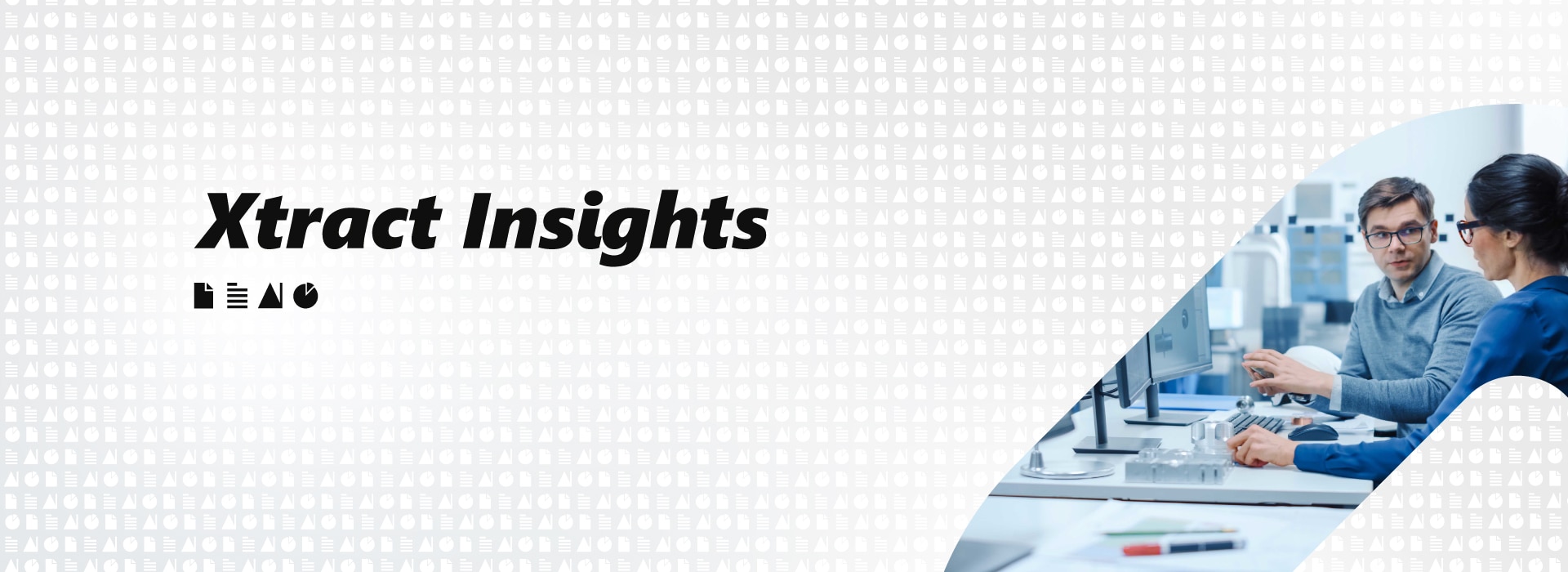Home > XtractEdge > Blogs > Computer Vision: Extracting insights from visually rich complex documents
Computer Vision: Extracting insights from visually rich complex documents

Artificial Intelligence has evolved to make existing enterprise operation models more efficient. But its real value lies in intelligently tackling more significant business complexities efficiently. Computer Vision is one of its most exciting capabilities tasked with automating processes usually catered to by the human visual system.
Machine Learning algorithms have already exceeded Computer Vision applications and their capacities beyond human visual computing power. Today, the same technology is used to mimic human capabilities in visual cues to extract insights from visually-rich complex documents.
What is Computer Vision, and how does it help enterprises?
Computer Vision is an Artificial Intelligence capability that gains a high-level understanding of digital images or videos and extracts information from images and other visual inputs.
Enterprises across industries and verticals process a staggering amount of information daily. Much of these data are scattered across various documents of different formats and originate from multiple sources. Document categories include contracts, invoices or even infographics. Documents are broadly segmented into the following:
Visually rich documents are heterogeneous, which makes processing and classification challenging endeavor. Unlike humans, the traditional OCR falls short of interpreting data from such records since visually rich documents are anything but homogenous and consistent.
Computer Vision use cases
Structured textual documents rely mostly on templates and NLP-based analytics for information extraction. On the other hand, the semantic structure of visually rich documents is observed primarily by visual cues interpreted by the human brain.
Technologies that can help automate and augment visual-rich document recognition for intelligence can deliver a powerful impact. Here are the following use cases:
Ad tech companies: These organizations analyze various materials such as posters, pamphlets, catalogs, digital ads, and other content assets. Computer Vision technology is used to inform their conversion strategy, devise promotions, and focus their content creation approach.
Marketing: Marketing teams analyze marketing assets, competition communication, and even industry research materials to develop cogent approaches for marketing and sales. Most of these documents are rich in visuals containing important information, best extracted with Computer Vision.
Research: Large research organizations frequently sift through thousands of pages of information in different formats, creating inefficiency and running the risk of bias and inaccuracy from human processing. Hence, AI technology with Computer Vision capabilities can prove transformative.
Retail: The same technology extracts information from product labels.
How does Computer Vision work?
The actual benefit of AI Computer Vision lies in identifying meaning, not mere object recognition and classification. It follows the multimodal image extraction technique, which is a collective analysis of multiple information types in the same document for a coherent understanding of its content.
Here, the visual cues from the image are used to tie different document segments into a cohesive message. A visually-rich document is represented as a graph, with each node containing specific information. The edges of the graph connect the information logically. AI capabilities like Computer Vision and OCR are used in conjunction to extract data from each node. At the same time, the graph’s neighborhood knowledge ties up all the information together to build a consumable narrative.
Here’s an example of a multimodal approach.
XtractEdge Platform
XtractEdge Platform provides enterprises with the ability to identify information from images and scanned documents using object detectors, OCR, handwriting recognition, and signature tagging. It combines advanced Machine Learning, Computer Vision, and natural language processing to offer a robust intelligence layer, delivering on-demand services such as intelligent document processing, data enrichment, and contract analysis.


Possibilities Unlimited
Possibilities Unlimited
Inspiring enterprises with the power of digital platforms
More blogs from EdgeVerve →